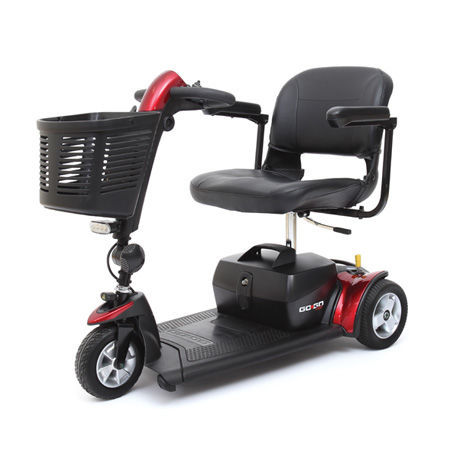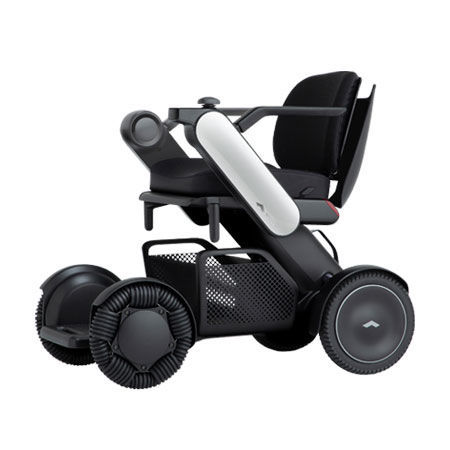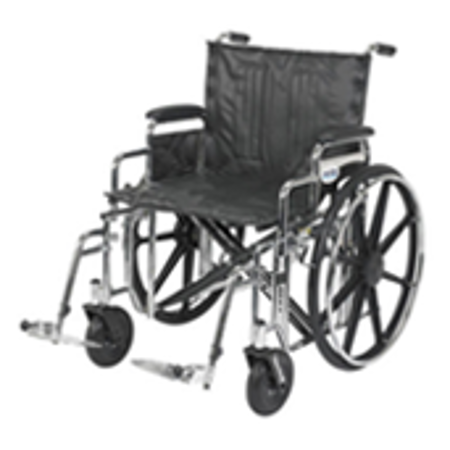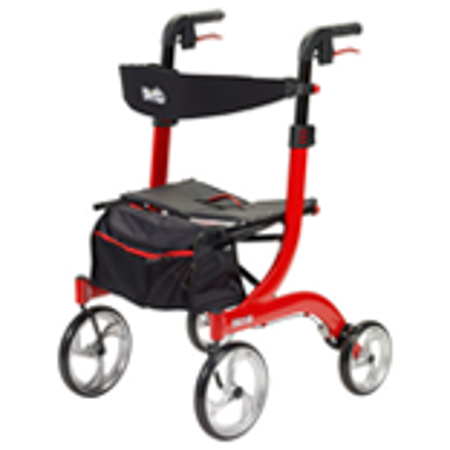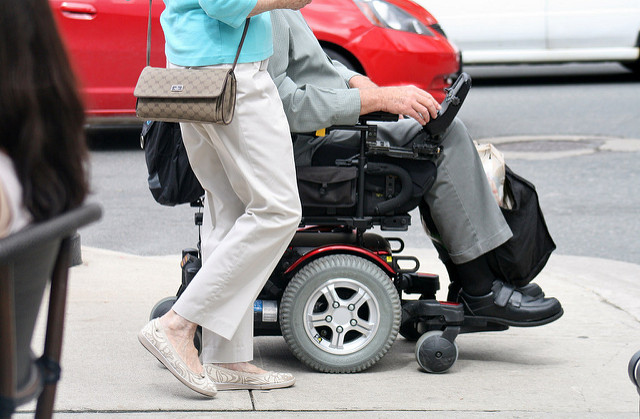
Maybe you're a power wheelchair veteran, or maybe you've just bought your first one. Whatever your amount of experience, you're sure to have certain expectations when it comes to the performance and reliability of your new power wheelchair. I know I do, because the chair's purpose is to serve me and I want it to do that in the best and most efficient way possible.
You might have questions like: How do I increase the range of my chair? What can I do to ensure and extend the life of my chair's battery? Or even something more general, such as: How do I make the most out of my new investment? All of these inquiries have one thing in common – they depend on your power chair's battery and how long it can keep you running.
Battery life and care is a major concern for any power wheelchair user, newbie or veteran, so I've compiled some tips and answers to common questions on how to extend the life of power wheelchair batteries below.
How long do wheelchair batteries last?
Fully charged power wheelchair batteries last for at least 8 hours and can be expected to achieve a range of around 10 miles, though if you've got a good one, you might be able to expect closer to 20 miles. However, factors such as battery health and the weight of the user will influence the time and distance you can travel on one charge.
If your battery is more than a year-and-a-half old, you can expect the range it allows you to travel on one charge to dwindle, and you should think about getting it replaced. Battery type also influences travel range, and sealed, lead-acid batteries are generally the preferable kind.
How much of a lifespan of can I expect from a power wheelchair battery?
The overall lifetime of your power chair battery will probably be one to two years – six months at the minimum. I wish I could give a more precise answer, but the reality is that it depends on a lot of factors, both varying and fixed.
These factors are as follows:
- How much you tend to do in one day, as well as the kind of terrain that you traverse in your chair, will both influence battery life. If you're quite active and like to explore off the beaten path, just know that it will cause more wear and tear on your power source. Hard, flat surfaces are the best for your wheelchair battery, especially if it's a traditional one.
- Your weight is probably a fairly fixed factor, and it will affect your battery's life. The lighter you are, the easier it will be on your battery. And, if you can help it, avoid constantly carrying heavy items while on your wheelchair, because more weight equals more battery strain.
- How frequently you charge your battery also influences its lifetime, but that's a whole topic of discussion in itself, so check out the answer to the next question for more details on good charging practices.
Many scooters and power chairs come with two batteries, so that if one is failing, the other will still serve you. However, if you ever find yourself getting less than a day's worth of work out of your power chair batteries, it's probably time to replace them both.
What's the best way to charge my power wheelchair battery?
If you're an active power wheelchair user, you may find yourself charging your battery on a daily basis – but that's a good thing! To optimize your battery life, it's actually advised to charge your battery daily. Batteries go furthest on a full charge, but you'll always want to charge your battery to at least 50% before an outing.
There are also a couple of other “best practices” which will help keep your battery in mint condition:
- Try to never let your battery reach a zero percent charge, but also don't keep “topping it off” by frequently charging it while it still has a decent amount of charge.
- Charging for short amounts of time is okay, as long as you're not doing this “topping off” practice all the time.
- Generally, it's best to charge overnight, since many power chair batteries will take at least 8 hours to achieve a full charge. But don't be too overzealous with this, as leaving your battery charging for more than 24 consecutive hours can have a negative effect.
- It can help your battery life to charge the batteries every two weeks, even if you haven't used them once in that time frame. Your chair's computer still drains its battery if left alone unless the batteries are completely disconnected – and if there's ever a long period of time where you won't be using your chair at all, disconnecting the batteries is the best course of action to preserve them.
How do I best care for my power wheelchair battery?
You want to make the most of your power chair's battery, and to do that, you've got to give it some TLC. Avoid exposing your battery to extreme temperatures, and don't leave your charger plugged in to the outlet while you're not using it. If you want your battery to live the longest life possible, make sure its terminals are well-greased and wipe it down if you see it covered in any dirt or condensation.
You might not realize it, but your driving patterns actually affect your battery life as well! To optimize it, try to travel at a constant speed and don't be a stop-and-go driver. Another factor that might not be so obvious is that maintaining proper tire pressure in your chair's tires will help your battery as well.
How do I safely use a battery charger for my power wheelchair while abroad?
Anyone who has traveled worldwide knows that different countries use electricity at different voltages. For small electronic appliances, a voltage converter will take care of the difference for you and allow you to plug in your electronics from home. Voltage converters are great for appliances with heating elements (like a hair dryer), but they can only be used for a short amount of time. This means that if you try to leave your wheelchair battery plugged into one, sparks may quite literally fly.
For something as powerful as power wheelchair batteries, and also because they require long amounts of time plugged in to the charger, you'll actually need a transformer rather than a voltage converter. How do you know if you need one? Well, take a look at your charger itself and it should say what range of voltage it can handle. If it says 110 V – 240 V, it's capable of handling the power in any country. If it's either just 110 V or 220 V, you won't be able to just use your charger alone.
Many power wheelchair companies sell transformers that are made to work with their equipment, so if you can, I advise checking with the company you purchased your chair and/or batteries from first. Otherwise, you just have to read the information about your chair to find out its wattage, and make sure to buy a transformer rated for at least 50% more wattage than your chair has.
Last but not least, don't forget the plug adapter – even if you have a dual-voltage charger that can be plugged directly into an international outlet with no transformer, the plug types might not be the same! Some countries use circle-pronged plugs, others don't. Check to see what plug types are used where you're traveling, and remember that if you do buy a simple plug adapter, it is not a substitute for a transformer.
How can I extend the range and distance of my battery while not limiting use of my chair?
In the end, there's only so much tender loving care that you can give to your battery, so here's my other hack for making the most out of my chair: using the WHILL Personal EV. Made especially for adventurers, it bills itself as the “future of power wheelchairs” – and I wholeheartedly agree.
The WHILL Model Ci2's multi-terrain capabilities can bring you up to 11 miles at a top speed of 5 mph. This is perfect for wheelchair users who love to explore hilly terrain, as the device's electromagnetic braking technology allows it to stop on a dime even on steep slopes. Gravel, uneven surfaces and even obstacles of up to 2 inches high are easily traversed with the Model Ci's innovative technology which allows for seamless movement.
Plus, it uses a 25.3V 10.6Ah lithium-ion battery which can operate and be stored in a wide range of temperature conditions – something which would normally take quite a toll on battery life.
You can rent or test drive the WHILL Model Ci2 in several major cities, including Orlando, Las Vegas, and Chicago. Or, if you're already sold on the idea after reading this article and checking out their site, you can also purchase WHILL products online.
And if you're a fellow power wheelchair user, I'd love to hear how you keep your batteries in tip-top shape while you go out and adventure!
 Cory Lee is a wheelchair user, travel addict, and accessible travel writer. On his blog, Curb Free with Cory Lee, he hopes to inspire others to roll out of their comfort zones and see all the beauty our world has to offer.
Cory Lee is a wheelchair user, travel addict, and accessible travel writer. On his blog, Curb Free with Cory Lee, he hopes to inspire others to roll out of their comfort zones and see all the beauty our world has to offer.
Images Used in This Article
Article feature image, "Electric wheelchair" by Ronn Jefferries is licensed under CC BY 2.0





